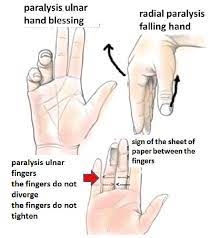OSTEOPOROSIS VS HAND PARALYSIS
Osteoporosis and hand paralysis are two distinct medical conditions that can affect a person's health and well-being. Let's discuss each condition separately, focusing on their characteristics and implications.
Osteoporosis:Osteoporosis is a condition characterized by the loss of bone mass and deterioration of bone tissue, making bones weak and brittle.
It often occurs due to an imbalance between bone formation and bone resorption, leading to decreased bone density.
Osteoporosis primarily affects older individuals, particularly postmenopausal women, although it can also occur in men.
Common risk factors include aging, gender (women are more susceptible), hormonal changes, a lack of calcium and vitamin D, certain medications, and a sedentary lifestyle.
The condition is often asymptomatic in its early stages but may lead to fractures, especially in the spine, hips, and wrists.
Treatment typically involves a combination of lifestyle changes (such as regular exercise, a calcium-rich diet, and vitamin D supplementation) and medication to slow bone loss or promote bone formation.
Hand Paralysis:Hand paralysis refers to the loss of voluntary muscle control and sensation in the hand due to nerve damage or injury.
It can result from various causes, such as stroke, spinal cord injury, brachial plexus injury, peripheral nerve damage, or conditions like muscular dystrophy.
Depending on the extent and location of the nerve damage, hand paralysis can range from partial loss of function to complete immobility and loss of sensation.
Hand paralysis can significantly impact an individual's ability to perform daily tasks that require fine motor skills, such as writing, grasping objects, and manipulating tools.
Rehabilitation plays a crucial role in managing hand paralysis, including physical and occupational therapy aimed at restoring hand function and developing compensatory techniques.
In some cases, surgical interventions, such as nerve repair or tendon transfers, may be considered to improve hand function.
It's important to note that osteoporosis and hand paralysis are distinct conditions affecting different parts of the body. While osteoporosis primarily affects bone health, hand paralysis relates to nerve damage and muscle control. However, it is possible for an individual to have both conditions concurrently, as they are not mutually exclusive.



No comments:
Post a Comment